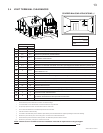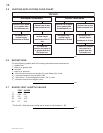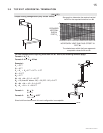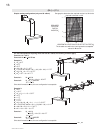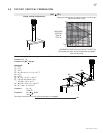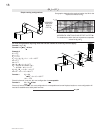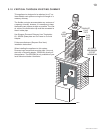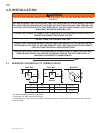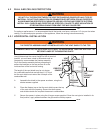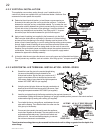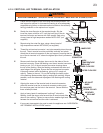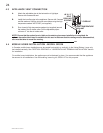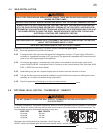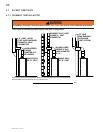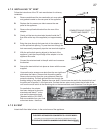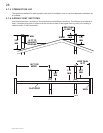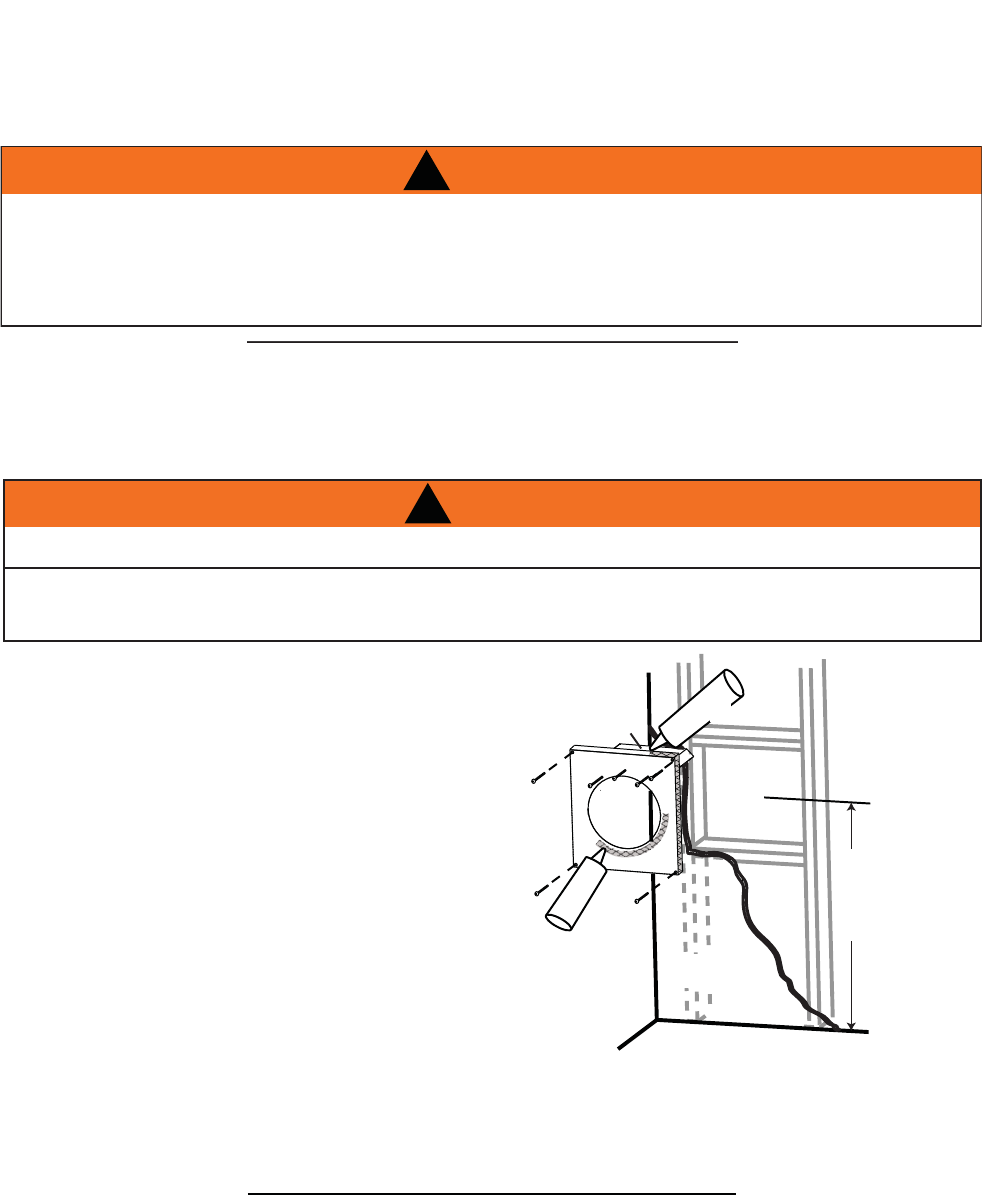
21
W415-0153 / B / 06.10.10
4.2 WALL AND CEILING PROTECTION
For optimum performance, it is recommended that all horizontal runs have a minimum 1/4" rise per foot when
venting. For safe and proper operation of the appliance, follow the venting instructions exactly.
!
WARNING
DO NOT FILL THE SPACE BETWEEN THE VENT PIPE AND ENCLOSURE WITH ANY TYPE OF
MATERIAL. DO NOT PACK INSULATION OR COMBUSTIBLES BETWEEN CEILING FIRESTOPS.
ALWAYS MAINTAIN SPECIFIED CLEARANCES AROUND VENTING AND FIRESTOP SYSTEMS.
INSTALL WALL SHIELDS AND FIRESTOPS AS SPECIFIED. FAILURE TO KEEP INSULATION OR
OTHER MATERIALS AWAY FROM VENT PIPE MAY CAUSE FIRE.
70.1
4.2.1 HORIZONTAL INSTALLATION
This application occurs when venting through an exterior wall.
Having determined the correct height for the air terminal
location, cut and frame a hole in the exterior wall as
illustrated to accommodate the fi restop assembly.
Dry fi t the fi restop assembly before proceeding to
ensure the brackets on the rear surface fi t to the
inside surface of the horizontal framing.
The length of the vent shield may be cut shorter
for combustible walls that are less than 8 1/2” thick
but the vent shield must extend the full depth of the
combustible wall.
A
. Assemble the shield to the spacer as shown, using the 3
shorter screws supplied.
B. Place the fi restop top so that the vent shield covers the top
of the vent within the opening. Ensure that both spacer
and shield maintain the required clearance to combustibles.
C. Secure the spacer in place using the 4 longer screws supplied. Once the vent pipe is installed in its
fi nal position, apply sealant between the pipe and the fi restop spacer.
DETERMINE
THE
CORRECT
HEIGHT
FIRESTOP
SPACER
VENT
SHIELD
FINISHING
MATERIAL
CAULKING
20.5A
!
WARNING
THE FIRESTOP ASSEMBLY MUST BE INSTALLED WITH THE VENT SHIELD TO THE TOP.
TERMINALS MUST NOT BE RECESSED INTO A WALL OR SIDING MORE THAN THE DEPTH OF THE
RETURN FLANGE OF THE MOUNTING PLATE.



